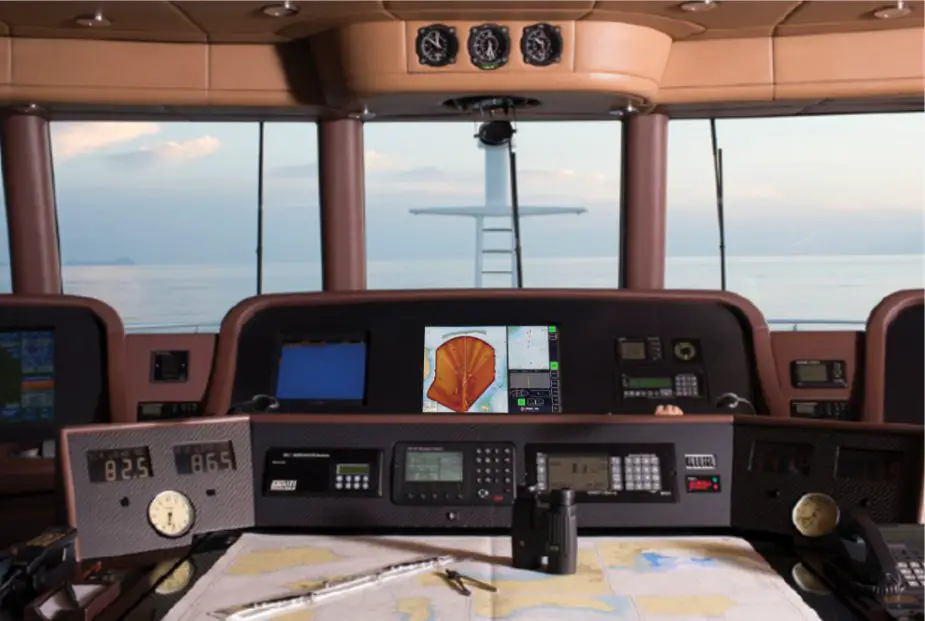Breaking news
Wavefront's sonar successfully tested onboard a XLUUV.
According to a press release published by Sonardyne on November 3, 2021, underwater obstacle avoidance technology from maritime defence technology companies, Sonardyne and Wavefront, has been successfully demonstrated onboard an extra-large, uncrewed, underwater vehicle (XLUUV) built and operated by Plymouth-based MSubs Ltd.
Follow Navy Recognition on Google News at this link
 Vigilant forward-looking sonar (Picture source: Sonardyne)
Vigilant forward-looking sonar (Picture source: Sonardyne)
The demonstration of the Vigilant forward-looking sonar was part of the first phase of the UK’s Defence and Security Accelerator’s (DASA) ‘Uncrewed Underwater Vehicle Testbed – Opportunity to Integrate’ competition, run jointly with the Royal Navy and the Defence Science and Technology Laboratory (Dstl).
The DASA competition is focused on testing and validating commercial-off-the-shelf technologies (COTS) sensors and payloads, like Vigilant, to help the Royal Navy understand the future roles for XLUUVS for surveillance, reconnaissance and anti-submarine warfare, and deliver new capabilities to the Royal Navy years earlier than otherwise be possible.
Vigilant, developed by Wavefront and manufactured and commercialised by Sonardyne, is a navigation and obstacle avoidance sonar for ships, uncrewed surface vessels (USVs) and underwater vehicles. It provides crews with automated long-range detection of objects in the water column, showing them where it is safe to navigate and alerting them to potential underwater dangers that could result in a collision or grounding.
The system has two operating modes. In 3D mode, Vigilant produces accurate 3D bathymetry and colour-coded depth imagery out to 600 m and to depths down to 100 m. In Sonar mode, Vigilant processes the intensity of the acoustic data to extract long-range positional data out to 1.5 km and over a 120-degree field of view. The sonar returns are used to generate alerts highlighting the presence of a navigationally relevant obstacle.
For the trial, the system’s sonar projector and receiver array were mounted in the bow of the 9 m-long MSubs’ S201 XLUUV. At just 31 cm-wide and weighing only 14 kg in air, Vigilant is easy to retrofit on a wide range of platforms including ships, USVs or, as in this case, an XLUUV.
As part of the demonstration, the XLUUV was programmed to travel beyond the breakwater outside Plymouth sound. Vigilant was used to create a bathymetric map that was used by the XLUUV to navigate. The data was also overlaid over existing charts of the area, demonstrating the higher resolution provided by Vigilant.
Vigilant (formerly NOAS) is a long-range, forward-looking sonar (FLS). It’s a compact navigation and obstacle avoidance sonar providing automated alarms of objects in the water column out to 1.5 km. It also creates – with unrivalled resolution and detail – a real-time, easy to interpret 3D terrain map of the seabed and water column ahead out to 600 m and down to 100 m water depth.
The system consists of a sonar projector and receiver array mounted in the vessel’s bow (or optionally on a retractable deployment pole) and bridge software.


























